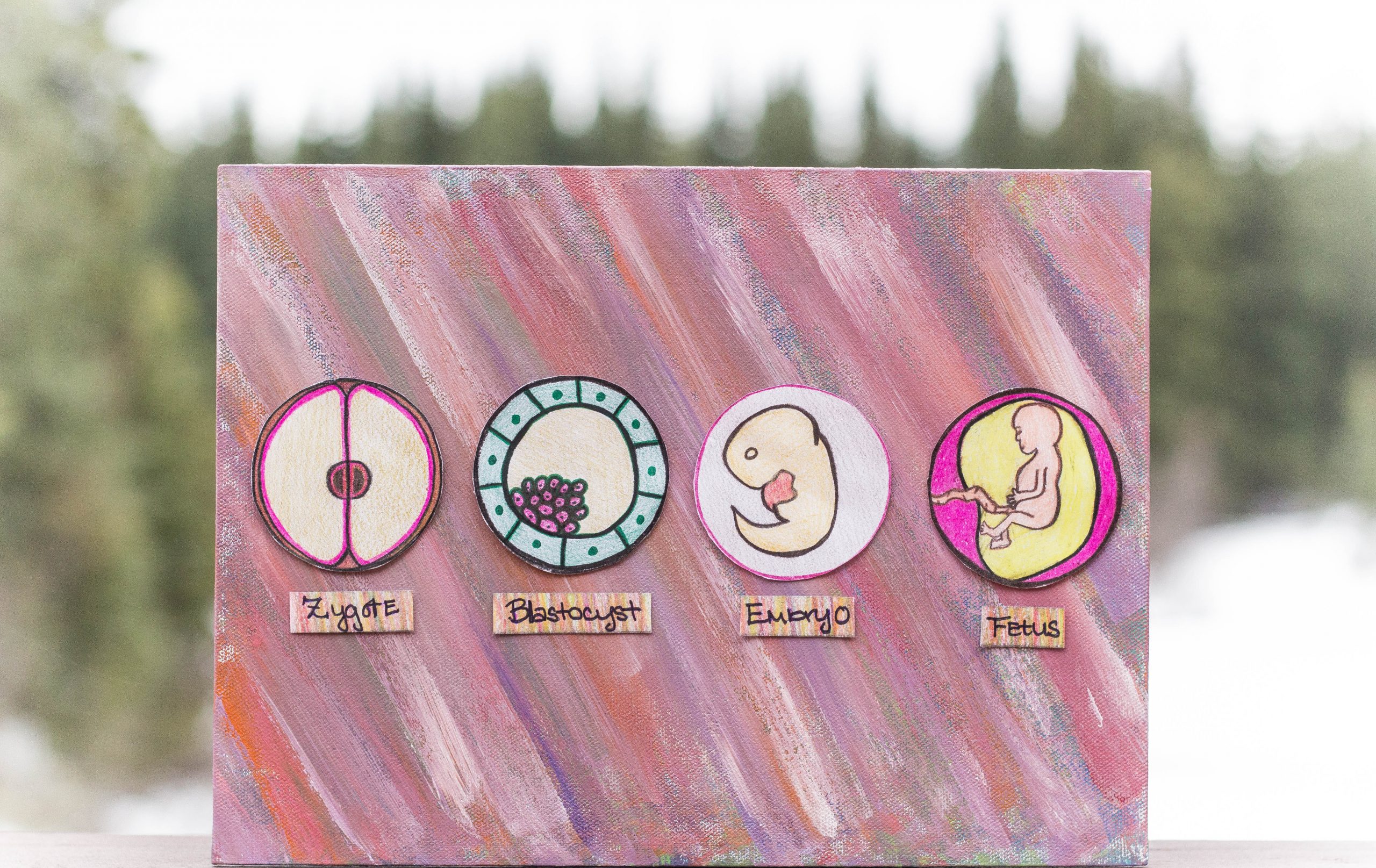Through the transformation of fertilization and development of a baby, many different changes occur at a cellular level. First, once the sperm and egg meet, a zygote forms. It is 2 cells, with 23 male and 23 female chromosomes. It then through mitosis begins to go through cell division. Once divided into 16 cells, a blastocyst begins to forms. This ball of cells attaches itself to the uterine wall, where it begins to gain all of its vital nutrients from. This is known as plantation. Once this process occurs, the embryonic stage begins and continues up until the beginning of week 9. During the embryonic stage the eyes, nose, ears and mouth begin to develop, followed by arms and legs. Once week 9 is reached, the baby transforms into a fetus. Once in the fetal stage, the baby will start to develop its sex organs, bone and muscle formations, reflexes, and movement.


For her STEAM project Miaya chose to do the Anatomy and Physiology objective of ‘describe the differences between a zygote, a blastocyst, an embryo, and a fetus’. Her visual representation of this learning objective was to show one distinct image of each phase. She explains that the zygote is the result of when sperm meets egg, combining to create a cell with 46 chromosomes and two pronuclei that have no yet combined. Then explained is the blastocyst, which is the result of 4-7 days of mitosis and rapid cell division. This ball of cells attaches itself to the uterine wall, implantation, and in her paper Miaya describes how 3 layers of ectoderm are formed, which later become the skin and nervous system. During the next stage she depicts a small embryonic sack with what is now clearly more than a few hundred cells. The original zygote now looks like the beginnings of a lifeform, with eyes and a very small heart and the beginnings of arms and legs. At this time the embryo is surrounded by fluid and connected with a placenta. This is all within just a few weeks after conception “fertilizationâ€. In just a few short weeks the embryo becomes a fully fledged fetus, and resembles the human baby it will soon come into the world as. Miaya shoes the umbilical cord, which is attached to the previously mention placenta. A fetus has clearly formed arms, legs, head, nose, mouth and eyes, as well as heartbeat. She does a great job of drawing each important aspect of the stages.
First off I would like to say awesome blog! I had a quick question which I’d like to ask if you don’t mind. I was curious to know how you center yourself and clear your head prior to writing. I have had a difficult time clearing my thoughts in getting my thoughts out. I do enjoy writing however it just seems like the first 10 to 15 minutes tend to be wasted just trying to figure out how to begin. Any suggestions or tips? Kudos!